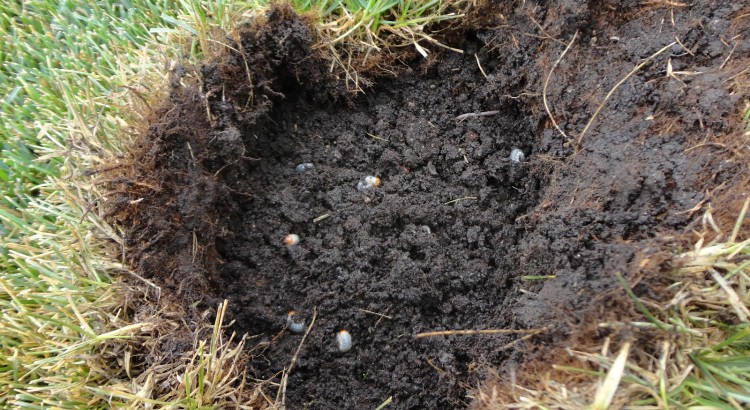One of the key signs you have grubs is damage from your lawn. This can come in two forms: Either an animal creating holds and lifting the turf to eat the grubs, or the grubs eating away at the roots of your lawn causing the turf to die. The first thing you need to do, is find out if you do have a grub problem:
Once you have determined you do have a grub problem, there are a few steps you can take. The biggest factor will be the time of year. If it’s Spring or early Summer a preventative method is best, if it’s late Summer or early Fall a curative method is best.
How to prevent Grubs in the first place
The “old” way was to use a product containing imidacloprid. This would kill the baby grubs preventing a new cycle of problems. However there is research that leads many to believe this also kills good bugs like honey bees. Good news, chlorantraniliprole is found to be just as effective, if not more, and has less of an impact on our environment.
The problem with Chlorantraniliprole, however, is it takes longer to work into the soil. This means you’ll need to put it down sooner in the year than imidacloprid. MSU recommends applying in April, or whenever you lawn turns green in the spring.
It’s also crucial to water this in. Watering it in brings the chemical into the soil where the grubs are. At least a half inch of water is needed immediately after applying. This ensures the product works itself into the soil, and gets off the grass keeping it away from animals and children.
How to kill Grubs after they become a problem
If you can no longer use a preventative method, but the problem isn’t too bad, you could wait until the next season to apply preventative. I personally am all for using less chemicals. If, however the problem is severe then using a curative approach will be necessary.
It’s important to remember that this won’t stop the grubs forever, you’ll still need to use preventative methods the following season. These products will only kill 20-80% of grubs if used in September, less when used in other months.
When looking for a product to use, the chemicals are carbaryl and trichlorfon. The easiest way to find trichlorfon is the label will say it kills grubs within 24 hours of contact. Technically speaking trichlorfon can kill within 24 hours, but realistically it can take a week before you see it’s results. Carbaryl can take up to a month.
What about Nematodes for Grub Prevention?
I haven’t personally used nematodes so I can’t say they do or don’t work. However, many people who do use them have said they worked well. The general concept is that Nematodes carry a bacteria which kills the grubs, and the nematodes feed on them. It’s a safe an natural way to reduce the grub population. The key is to apply them when the grubs are small.
